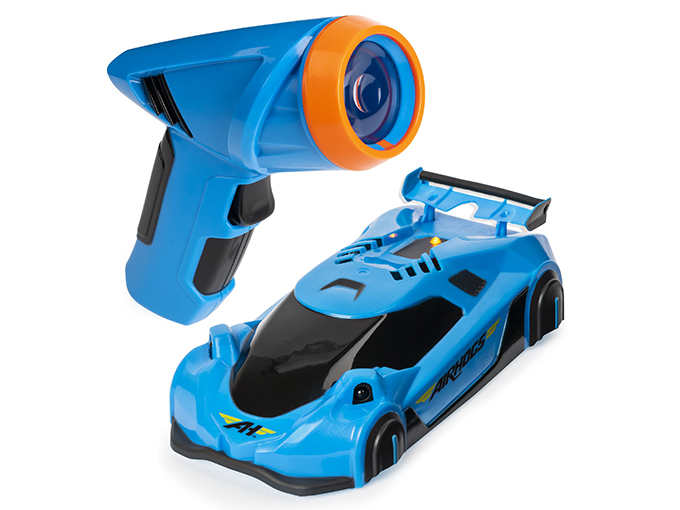Have you ever been scouring the internet for something—that hot new doll your kid just has to have—only to find a fake? It’s similar, but something about the doll is just off. Her face isn’t quite right, her hair is slightly strange, and—now that you look a little closer—you realize the listing isn’t actually the brand name you were searching for, but something incredibly similar.
Counterfeit toys have long been a problem, but in recent months the issue has come to a head as consumers have embraced online shop – ping more fully. Amazon paved the way for companies to sell directly to consumers through its Marketplace functionality, later replicated by other retailers like Walmart, which hosts third-party sellers. While many third-party vendors are on the up-and-up, the convenience of opening these digital storefronts—combined with the legitimacy that big names like Amazon and Walmart provide—created an entire ecosystem for knock – off products. And the toy market, which is characterized by kids’ demand for newness and price-conscious parents, is particularly susceptible to those peddling cheap counterfeits.
According to Barcelona-based brand protection partner Red Points, revenue generated from counterfeit toys reached US$32.3 billion in the US and US$44.6 billion in store closures accelerating consumers’ move to digital retail.
As COVID-19 has shifted parental shopping online, toycos, distributors and retailers are being forced to find new ways to stop these copycats in their tracks.
The toymaker
It’s crucial to crack down on counterfeiters because not only do knockoff toys damage the reputation of a brand, but they can be incredibly dangerous, says Chris Harrs, Spin Master’s EVP and general counsel.
“These toys probably haven’t gone through any testing. E-commerce platforms need to [start] requiring third-party vendors to produce proof that these items have gone through the requisite testing [that brick-and-mortar retailers require]. These items are just going straight into consumers’ hands,” Harrs says. In recent years, children have been hospitalized due to everything from knockoff hoverboards that exploded while charging, to counterfeit construction sets that came apart to reveal tiny magnets.
Spin Master has received its fair share of complaints from customers about counterfeit items that turned out to be choking or fire hazards.
“They tell us, ‘Your product caught on fire!’ And we have to explain that it wasn’t our product.” Spin Master struggles with so many knock-offs, Harrs says, because the Toronto-based toymaker focuses on innovative technology (such as Hatchimals), and counterfeiters love to take advantage of the viral sensation of a new hit toy.
“Hatchimals was the top gift for Christmas a few years in a row, and we had trouble supplying the market,” he says. “That’s when counterfeiters jump in to fill the void. With PAW Patrol, I probably shut down 2,000 to 3,000 counterfeit sellers in a month. The problem is that when you shut one down, it pops up again. The potential market size has grown, and we’ve had to adapt the way we fight.”
Knockoff products using a protected trade- mark (like PAW Patrol) are relatively easy to have removed from online retail platforms, Harrs says. Things become more complicated, however, when products that look identical to PAW Patrol are labelled something like “Dogs on Patrol.” In that case, Spin Master must prove copyright in- fringement, and it can be incredibly difficult to get online retailers to remove a knockoff product on that basis.
Even more difficult, Harrs says, is trying to enforce a patent. “No one else ever had a toy hatch out of an egg like Hatchimals—it’s unique, and I have a patent for it,” he explains. “But to try and prove to an e-commerce site that some- one is infringing on your patent—it’s too tech- nical a discussion. For someone knocking off Hatchimals, it really has to use the name or look exactly like our product for me to stop them. If it just utilizes the technology, I’m not going to be able to stop that online sale.”
One particularly effective method against knockoffs, Harrs says, is working with a legal team in the US to sue multiple counterfeiters (as many as 150 at once) for a temporary restraining order. The restraining order freezes accounts and payment mechanisms, he explains, which hits the infringers where it hurts—their bottom lines. Because these third-party vendors are often selling knockoffs of multiple brands, profit from all of those items (and not just those related to PAW Patrol) is frozen.
“They don’t want to go to court because it’s too expensive, and so we end up settling. We take 90% [of the profit] and give 10% back, and now they want nothing to do with PAW Patrol because they don’t want their accounts frozen again. These temporary restraining orders are becoming very popular in the US.”
One significant obstacle in the company’s fight, however, is the fact that the majority of online retailers have very little information on third-party sellers, says Harrs. These independent vendors offer a variety of merchandise, which can be new, used or refurbished. The companies often develop cheap versions of existing products, using poor-quality materials to undercut the original’s price. These counterfeiters can operate anywhere in the world and sell their products globally.
Counterfeiters can also buy their way into consumers’ Google searches—a vendor selling knockoff Hatchimals, for example, might buy the “Hatchimals” search term so that consumers Googling a product will be directed to the knock- off instead.
And because third-party sellers aren’t subject to the same scrutiny as wholesalers, counterfeiters can open up a new account and begin selling the same product within a few days after being removed for infringement.
The retailer
While the pandemic has only compounded this is- sue for toymakers, it’s a problem that online retail- ers like Amazon have been living with for awhile.
Of the US$2.7 trillion in imports processed in 2019, the US Customs and Border Protection Office of Trade seized more than US$1.5 billion in goods through intellectual property rights enforcement.
Amazon has a number of programs—like Brand Registry, Transparency and Project Zero—to combat the issue. These program broadly give IP owners the means to detect and report suspected infringement, arming items with unique codes that can be used to verify authenticity, or making it easier to report counterfeited items for removal.
In June, Amazon established its Counterfeit Crimes Unit. The global team is composed of investigators, data analysts and former federal prosecutors, and its first objective is to prevent counterfeit items from being listed on the retailer’s platform. When counterfeit items are listed, the unit works with brands to pursue civil litigation against bad actors. In all, Amazon says more than 8,000 employees are dedicated to tackling fraud.
In the past, however, Amazon has fought to limit its legal responsibility for the counterfeit goods sold on its platform. In 2017, a US federal appeals court upheld a 2015 decision in favor of Amazon in a dispute over goods sold by a third-party vendor on the platform. Seattle-based Milo & Gabby filed the case in 2013, alleging a manufacturer in China copied its pillowcase de- signs and then used Milo & Gabby’s product photos to sell the counterfeited items on Amazon.
Milo & Gabby argued that Amazon was liable for the infringement, but Amazon countered that its fulfillment, payment processing and product listing services do not mean the company is offering a product for sale. The courts agreed, ruling that Amazon was not responsible for any potential infringement in the case.
As long as online retailers continue to distance themselves from the issue of counterfeiters, it will be difficult for IP owners to meaningfully address copycat toys, says Jason Aghatise, a trademark attorney for Wynne-Jones IP. It’s crucial, he says, for all industry players to collaborate in order to create substantial change.
The attorney
Wynne-Jones first announced its Toy and Game Copycat Code of Conduct in September 2019. This effort is meant to protect brands by uniting partners across the industry—toycos would agree not to design copycat products, manufacturers would agree not to produce them, and retailers would agree not to stock them.
The UK-based law firm was inspired to launch the code of conduct because retailers and knock- off manufacturers often operate within the laws of IP protection—if the product is just different enough, there’s nothing the owners of the original property can do.
“Copyright protection guards the manifestation of an idea. If somebody tries to copy that manifestation, you have legal protection. The problem is that infringers are often not copying the manifestation of the idea, they’re copying the idea itself and manifesting it in a different way,” says Aghatise. “An example is Thomas the Tank Engine—if someone launched a show about Frank the Fire Engine, they’re manifesting the idea in a different way, even though the idea is incredibly similar. That makes it a copycat rather than a counterfeit, and that limits what an IP owner can do. And retailers like Amazon are sell- ing these copycat products.”
Wynne-Jones’s plan is for participating toymakers to file a certification trademark, Aghatise says. This would place a symbol on the packaging— similar to the fair-trade mark—that signifies to consumers that the product is not a copycat, and that the company behind the toy adheres to the agreed-upon guidelines.
The code would also give members an avenue for recourse—once complainants prove a product is their original idea, the manufacturer producing the copycat toy and the retailer selling it (presumably members of the coalition) would both be required to cease and desist. The system requires buy-in from all aspects of the industry, Aghatise says, but he believes companies will choose to participate when they realize the code encourages creativity by stifling copycat efforts.
“If you could know that your hard work would not be copied, I think it would lead to more innovation. It would be good for the industry as a whole,” he says.
Wynne-Jones is still in the process of organizing the code’s various structures, including methods of filing complaints against copycat toys and informing the involved parties that they are manufacturing or selling a knockoff. The company recently sent out questionnaires to members of the industry to better understand the needs of toymakers, manufacturers and retailers. The response, so far, has been largely positive, Aghatise says.
The goal, he adds, is to make the process of shutting down counterfeiters much more efficient, and much less expensive. With the participation of a several influential companies— like, say, Amazon or Spin Master—he believes the code will have a significant impact. And these new efforts against counterfeiters are crucial, according to Harrs, because the issue of knockoffs and copycats is only getting worse. “It’s a constant fight for us.”



























